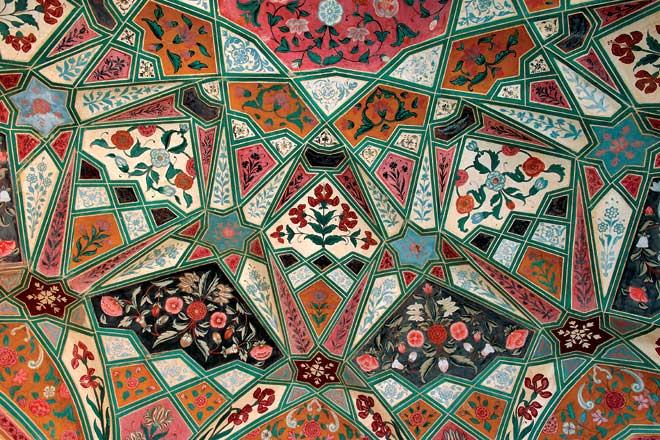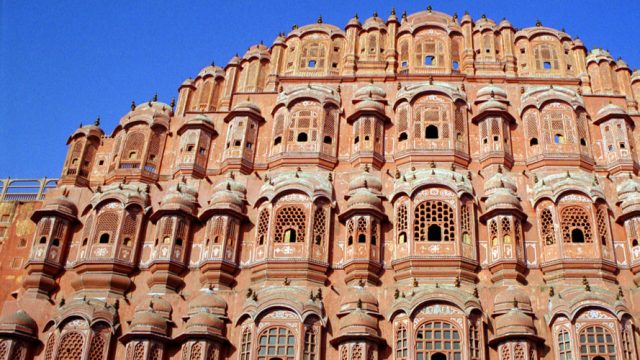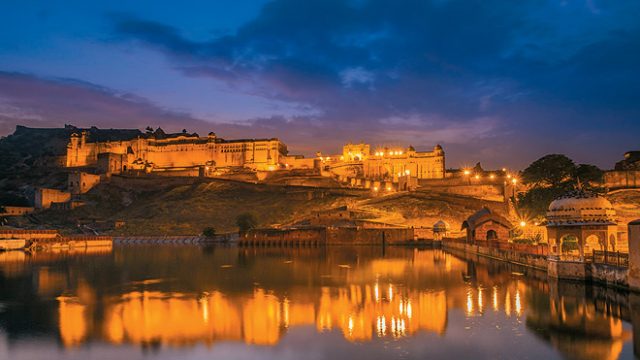By the beginning of the second journey, we had already begun to recognise that feeling. My
This was an alien feeling for an Indian traveller who has all her life seen train rides as a sort of survival test, something to be endured until the destination was reached. But no denying it: we had much love for this train, the Desert Circuit Special, and our nice, warm coupé felt more inviting than a hotel room, especially as we knew that someone would pop around within minutes, offering a soup or a juice or a coffee to help us recover from all that hard work of sightseeing.
After the first overnight journey from Delhi, we had woken up in Jaisalmer. The day before, the inaugural Desert Circuit Special had chugged out of Safdarjung railway station amid marigolds, shehnais and big smiles. Our arrival was at the crack of dawn, the light magical enough to make the stone chips heaped along the tracks resemble desert dunes from a Hollywood movie. The expanding city of Jaisalmer— as yet it’s only about three kilometres across—is suffering from all the ill-effects of higgledy-piggledy urban development, but at its core is a fortress covered in glory by its cinematic association, and the city’s modern history is based on a triumphant chapter of warfare.
Once a prosperous stop on the Silk Route, Jaisalmer fell into neglect after trade and commerce moved to the port city of Bombay. Stuck in one corner of Rajas-than, the state’s last city before the border with Pakistan, it was practically forgotten, until 1971. That year, two things happened: author-filmmaker Satyajit Ray published Sonar Kella, a detective novel climaxing in Jaisalmer Fort (and adapted it for the screen three years later), sending a generation of Bengalis, that most die-hard breed of travellers, into raptures over the city’s golden fortress and desert sunset silhouettes; and a tiny company of the Indian Army valiantly fought a Pakistani force equipped with much more firepower in the famed battle of Longewala (recreated in the 1997 film Border), close to Jaisalmer. Thus, the city of yellow sandstone was firmly etched in the memory and imagination of India.

Today’s Jaisalmer is precariously balancing the conservation of its magnificent heritage with the need to make the economy hum. Its sandstone quarries spit out the rock that the whole world now wants and wind turbines whirr serenely among patchy vegetation, giving the city two very saleable commodities. The fort itself is threatened by subsidence from the carelessly installed plumbing in every household turned into a hotel in the past couple of decades; the water seepage turns the sandstone soft.

That threat to its existence is, ironically, the very beauty of Jaisalmer fort —it’s a “living fort”, in guidespeak, where a few thousand people have resided for centuries. Life buzzes inside the boundary walls; pedestrians, cows, motorbikes, auto-rickshaws careen into each other; all kinds of handicrafts are busily hawked outside every front door; ‘pure Italian’ food competes fiercely with ‘pure veg’; hotel gates are left wide open to welcome any walk-ins; devotees and architecture enthusiasts queue up at the temple in the central square; high-street fashionistas bask in the sun on the steps adjoining the Fort Palace; tourists innocently photobomb other tourists. The rush of activity can make one’s head spin, until dusk descends and the lanes empty out, leaving only the soft glow of house lights and the prospect of a peaceful sunset watched from a cool rooftop café. In the late afternoon light, the fort looks truly golden.
We were in the enviable position of being able to compare sunsets, having been to the Thar dunes the day before, where camel rides awaited us, to be followed by the standard dinner and folk dance programme at a nearby camp. The abject poverty of the camel handlers makes this part of the trip more poignant. The ships of the desert and their landless owners are now at the complete mercy of busloads of tourists who come and litter the sands to their heart’s content. Even so, Salman Khan, Rajesh Khanna, Michael Jackson and their kind choose to rise above their circumstances, taking restorative naps between carrying yelping riders. “Keep calm and sleep when you can” seems to be the camel mantra.
The golden hour came and photogenic silhouettes appeared on the dunes. The sky was afire. Poses were struck all around. Some people were no doubt gaining social media fame for their mastery of the smartphone camera. A large group of tourists shouted out in joy sliding down the dune slopes repeatedly, as if they had just discovered sand. It seemed they might never leave. But we had to.
The train journey to Jaipur was another overnight. Our little coupé felt like home. Well-fed—rather overfed, truth be told—we were soon ready to slip under the duvets. Hard to say if the service would be as good when the semi-deluxe train runs close to its full capacity of about 240 travellers, but it passed the inaugural trip with flying colours. Dressed up for the Desert Circuit, this same train does the Buddhist Circuit as well. An inspection of the facilities showed that living on the train, without ever checking into a hotel could be possible, though the sooner it gets retro-fitted with bio-toilets the better.
Jaipur let us know that it was a big city with a massive jam that slowed the 20km station-to-hotel bus ride to an absolute crawl. Sorry, Jaipur doesn’t do traffic. However, the Johari Bazaar area, the commercial heart of the Pink City, seems to have been beaten into some sort of shape— you can actually see the road surface now. It was in and out of the hotel quickly, to see the Jantar Mantar observatory and City Palace. The first is an astonishing and immaculately maintained scientific achievement of the astronomer king Sawai Jai Singh II, bringing out emotions of “what a great country we were”; while the second is one of the most beautiful and well-preserved royal residences in the world. Inside the palace, a stunning terracotta hall with marble pillars displays two massive silver vessels, each named ‘Gangajali’, created by melting 14,000 Jaipur coins. Named so because they were used as containers for gangajal (water from the Ganga) for the use of Maharaja Sawai Madho Singh II. Talk about the privileges of being a royal; even the sacred river was not a great leveller. Traffic restrictions mean gazing at the majestic Hawa Mahal, the icon of Jaipur, from the bus. If you have the leisure, there’s an intricate network of halls and balconies and courtyards to be explored behind the façade.
Our evening pitstop, Chokhi Dhani, the faux Rajasthani village that’s a huge draw for tourists, was notable mostly for the great thali served to endless queues of hungry visitors. The rest of it, the dancers, the handicrafts, the desi snacks were all standard fairground offerings dressed up brightly. A pair of oppressed bovines made to stand under a heavy yoke, waiting to give the good old ‘Indian bullock cart’ ride to tourists, aroused anger at cruelty against animals rather than a desire to hop on to the cart. If elephants are more to your taste, that’s there, too.

The place where an elephant ride really counts is Amer Fort (or Amber Fort), the former capital of Jaipur before the Pink City was built. The fort complex was described by the guide as ‘the jewel of Jaipur’, and we’re happy to say the moniker is no exaggeration. The fort is, to use a hackneyed (but correct) description, breath-taking—and that’s even if you get there in a vehicle without doing the steep uphill walk. As soon as we entered the first courtyard, once the gathering place of soldiers, we saw the fort elephants arriving one by one from the other side, each carrying tourists who must have felt like minor royalty as they entered through the gate traditionally used by the kings.

The mind-blowing wall frescoes of Amer Fort have endured a million bodies leaning against them without any major renovation. The hall of mirrors is a wonder of science and artistry, designed to remain warm in winter if a lamp is lit, its light reflected by the thousands of tiny mirrors. The king’s saffron garden, floating on a lake, once perfumed the palace when the wind blew in this direction. How did they do it? And why does present-day Jaipur have such ugly buildings when a few generations back, it had Amer? Even the Pink City, designed by the architect Vidyadhar Bhattacharya on the orders of Sawai Jai Singh II in the third decade of the 18th century, is incredibly well-planned and of geometric perfection. It has taken less than three hundred years for such an inheritance to be sullied by the madness of what goes for modern. What shall we see in the next three hundred? Heritage, as I learned from this trip, raises many questions about the future.
conservation
heritage
India




